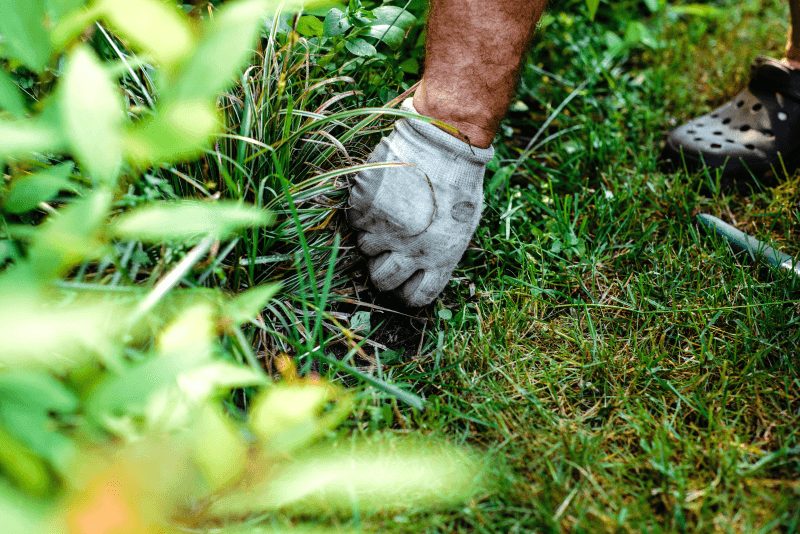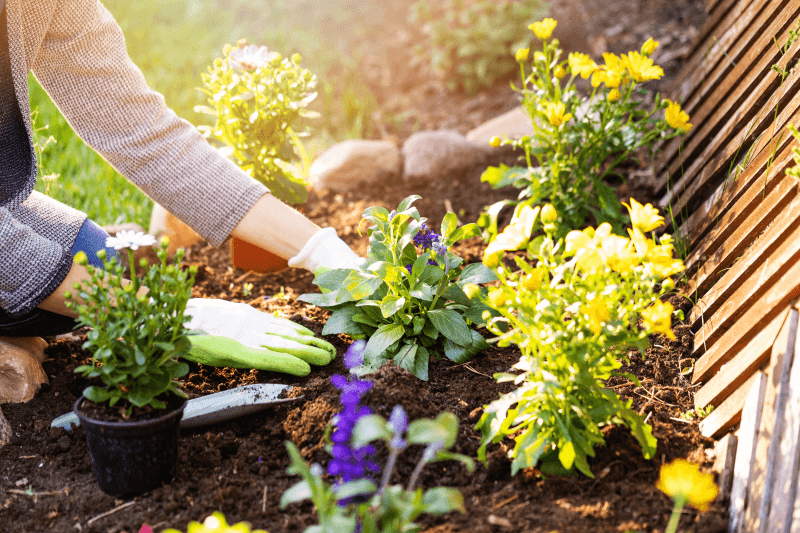How to Prepare Your Land for Summer | United Country Real Estate
How to Prepare Your Land for Summer
Essential Steps for Taking Care of Your Property
Preparing your land for the summer season is vital to ensuring a healthy and vibrant outdoor space that you can enjoy throughout the warm months.
By investing time and effort into proper land preparation, you can create an environment that thrives with lush gardens, a well-maintained lawn, and an overall aesthetically pleasing property.
In this article, we will explore the importance of preparing your land for summer, the benefits it offers, and provide an overview of key steps to follow for optimal land preparation.
Maintaining your property during the summer offers numerous benefits. Firstly, well-prepared land provides a welcoming environment for outdoor activities, such as gardening, barbecues, or simply relaxing in a beautiful setting.
Secondly, a carefully tended landscape enhances the overall aesthetic appeal of your property, making it more visually appealing to you, your family, and your guests.
Lastly, a well-maintained property can increase its value and curb appeal, should you ever decide to sell your home.
When it comes to the well-being of your property, preparing the land for summer is a crucial task. By taking proactive measures, you can create an environment that supports the growth and health of your plants and trees, giving them the best chance to flourish during the warmer months.
Adequate preparation also helps prevent issues such as weed overgrowth, pest infestations, and soil nutrient imbalances, ensuring a harmonious and attractive outdoor space.
Assessing Your Land
Evaluating the Condition of Your Soil
To ensure optimal growth for your plants and a healthy garden, it’s important to start by evaluating the condition of your soil.
This assessment allows you to understand its pH levels and nutrient content, enabling you to make necessary amendments or adjustments.
- Testing Soil pH and Nutrient Levels: Use a soil testing kit or send samples to a local agricultural extension service for analysis. This will provide insights into the pH level of your soil and its nutrient composition, including nitrogen, phosphorus, potassium, and other essential elements. Based on the results, you can determine if any amendments are required.
- Making Necessary Amendments or Adjustments: Depending on the test results, you may need to modify the soil’s pH or nutrient levels. For instance, if the soil is too acidic, you can add lime to raise the pH, or if it’s alkaline, you can use elemental sulfur to lower the pH. Additionally, organic matter such as compost or well-rotted manure can be incorporated to enhance the soil’s structure and nutrient content.
Inspecting Your Garden and Identifying Areas That Require Attention
A thorough inspection of your garden is crucial to identifying areas that need special attention.
By assessing the health of existing plants and trees and identifying areas prone to weed growth or pest infestation, you can address these issues promptly.
- Assessing the Health of Existing Plants and Trees: Take a close look at your plants and trees to identify any signs of poor health, such as wilting, discoloration, or pest damage. Note any specific issues you observe, such as leaf spots, stunted growth, or abnormal leaf drop. This will help you determine the necessary steps to restore their health and vitality.
- Identifying Areas Prone to Weed Growth or Pest Infestation: Carefully inspect your garden for any signs of weeds or areas that are vulnerable to weed growth. Look for common weed species in your region and take preventive measures accordingly. Additionally, identify potential pest hotspots, such as areas with standing water, decaying organic matter, or vulnerable plants. By recognizing these areas, you can implement targeted weed control and pest management strategies.
Preparing the Soil and Garden
After assessing your land, the next step is to prepare the soil and garden for optimal growth and productivity. This involves clearing debris, tilling the soil, adding organic matter, and establishing a proper watering schedule.
Clearing Debris and Leaves Left Over from Winter
Before you begin preparing the soil, it’s important to clear any debris, dead plants, and fallen leaves that may have accumulated during the winter months.
Removing this organic matter helps prevent disease and pest issues, allowing your garden to start fresh for the summer season.
Preparing the Ground for Planting
- Tilling and Loosening the Soil: Using a garden fork or a tiller, carefully loosen the soil to a depth of 8 to 12 inches. This process helps break up compacted soil, improves drainage, and promotes better root penetration for plants. Remove any large rocks, weeds, or roots during this process.
- Adding Organic Matter and Compost for Improved Fertility: Incorporate organic matter, such as well-rotted compost, into the soil. This enriches the soil with essential nutrients, improves its structure, and enhances water retention capabilities. Spread a layer of compost evenly across the planting area and mix it into the top few inches of soil.
Implementing a Proper Watering Schedule for the Season
Proper watering is vital for the health and growth of your plants. Understanding the water requirements of different plants and utilizing efficient irrigation methods will help ensure they receive the right amount of moisture.
- Understanding the Water Requirements of Different Plants: Different plants have varying water needs. Research the water requirements of the specific plants in your garden and group them accordingly. Some plants may prefer drier conditions, while others require more frequent watering. This knowledge allows you to tailor your watering schedule accordingly.
- Utilizing Efficient Irrigation Methods: Consider using efficient irrigation methods, such as drip irrigation or soaker hoses, which deliver water directly to the root zone of plants. These methods minimize water loss due to evaporation and ensure that the water reaches the plant’s roots, where it’s needed the most. Additionally, mulching around plants with organic mulch, like wood chips or straw, can help retain soil moisture and reduce water evaporation.
Managing Pest and Weed Control
To ensure the health and vitality of your garden, it’s essential to manage pests and weeds effectively. By identifying common pests and diseases, implementing preventive measures, and employing effective weed control strategies, you can minimize damage and maintain a thriving garden environment.
Identifying Common Pests and Diseases in Your Area
Begin by familiarizing yourself with the common pests and diseases that are prevalent in your region.
Local agricultural extension services, gardening clubs, or online resources can provide valuable information on pests and diseases specific to your area.
Understanding the signs and symptoms of these issues will help you identify them early and take appropriate action.
Preventive Measures for Pest Control
- Installing Physical Barriers or Fences: Depending on the type of pests in your area, installing physical barriers or fences can help protect your garden from intruders. This can be particularly useful for keeping out larger pests like deer or rabbits. Ensure that the barriers are properly installed and maintained to effectively deter pests.
- Using Organic and Safe Pest Repellents: Consider using organic and safe pest repellents to protect your plants. Natural solutions like companion planting (where certain plants deter pests), introducing beneficial insects, or using homemade insecticidal soaps can help control pests without harming the environment or beneficial insects.
Effective Weed Control Strategies
Weeds compete with your plants for water, nutrients, and sunlight, hampering their growth. Employing effective weed control strategies is essential for maintaining a healthy garden environment.
- Mulching to Suppress Weed Growth: Apply a layer of organic mulch, such as wood chips, straw, or shredded leaves, around your plants. This helps suppress weed growth by blocking sunlight and preventing weed seeds from germinating. Additionally, mulch helps conserve soil moisture, regulate soil temperature, and improve overall soil health.
- Regularly Removing Weeds: Regularly inspect your garden and remove weeds promptly. Ensure that you remove both the weeds and their roots to prevent regrowth. Hand pulling, using a hoe, or employing specific weeding tools can make the process more efficient. Keep weed control up-to-date throughout the growing season.
Maintaining a Lush Lawn
Mowing Techniques for the Summer Season
- Set the Mowing Height: Adjust your mower to the appropriate height for your grass type. Generally, warm-season grasses are best maintained at a height of 1.5 to 2.5 inches, while cool-season grasses can be kept slightly longer at 2.5 to 4 inches. Avoid cutting more than one-third of the grass blade length at a time.
- Regular Mowing Schedule: Maintain a regular mowing schedule, typically once a week during the active growing season. This helps promote denser growth and discourages weed development. Avoid mowing when the grass is wet to prevent damage to the lawn.
Watering Your Lawn Correctly to Promote Healthy Growth
- Deep and Infrequent Watering: Water deeply but infrequently to encourage deep root growth. This helps the grass withstand dry spells and promotes a stronger, healthier lawn. Apply about 1 inch of water per week, including rainfall. Water in the early morning to reduce evaporation and allow the grass to dry before evening.
- Use Efficient Irrigation Methods: Utilize efficient irrigation systems such as sprinklers, soaker hoses, or drip irrigation. These methods minimize water waste and ensure even distribution throughout the lawn. Adjust the irrigation schedule based on weather conditions and the specific water needs of your grass type.
Common Lawn Issues like Bare Patches or Brown Spots
- Reseeding Bare Patches: Rake the bare patches to remove debris and loosen the soil. Overseed the area with grass seed appropriate for your lawn type. Keep the soil moist during germination and provide regular watering until the new grass becomes established.
- Addressing Brown Spots: Brown spots can result from various factors such as under or overwatering, fungal diseases, or nutrient deficiencies. Identify the underlying cause and take appropriate action. Adjust watering, apply fungicides if necessary, and ensure proper fertilization to address nutrient deficiencies.
Caring for Trees and Shrubs
Trees and shrubs contribute to the overall beauty and structure of your landscape. Proper care ensures their health and vitality.
Inspecting Trees for Signs of Damage or Disease
Regularly inspect your trees for signs of damage, disease, or pest infestation. Look for dead or decaying branches, unusual spots or discoloration on leaves, or signs of insect activity. Promptly address any issues to prevent further damage or the spread of diseases.
Pruning and Trimming to Promote Healthy Growth
Pruning and trimming are essential for maintaining the shape, size, and health of trees and shrubs.
Remove dead, damaged, or crossing branches to improve air circulation and promote healthy growth. Prune during the appropriate season for each plant species, following proper pruning techniques to avoid unnecessary stress.
Mulching Around Trees and Shrubs to Save Water
Apply a layer of organic mulch, such as wood chips or shredded bark, around the base of trees and shrubs.
Mulch helps conserve soil moisture, regulate soil temperature, suppress weed growth, and protect the roots from extreme temperature fluctuations. Keep the mulch a few inches away from the trunk to prevent moisture-related issues.
Enhancing the Aesthetic Appeal
Enhancing the aesthetic appeal of your outdoor space adds a touch of beauty and creates a welcoming atmosphere. Consider adding colorful summer flowers and plants, creating defined pathways and borders, and incorporating outdoor seating areas or recreational spaces.
Adding Colorful Summer Flowers and Plants
Planting vibrant and colorful flowers and plants can instantly elevate the visual appeal of your garden. Choose species that thrive in the summer season and complement your existing landscape.
Consider a mix of annuals and perennials to ensure continuous blooms throughout the season. Place them strategically to add pops of color and create focal points in your garden.
Creating Defined Pathways and Borders
Define pathways and borders within your garden to create structure and organization. This can be achieved by using materials like gravel, stepping stones, or bricks to create clear paths that guide visitors through the garden.
Additionally, bordering flower beds or garden areas with decorative edging can provide a neat and polished look, enhancing the overall aesthetic appeal.
Incorporating Outdoor Seating Areas or Recreational Spaces
Make your outdoor space more inviting by incorporating designated seating areas or recreational spaces.
This can include outdoor furniture such as benches, chairs, or a dining set, allowing you to relax, entertain, and enjoy the beauty of your surroundings. Consider adding features like a pergola, a fire pit, or a water fountain to create a focal point and enhance the overall ambiance of your outdoor area.
Preparing Your Land For Summer
Preparing your land for summer involves a series of essential steps to ensure a thriving and beautiful outdoor space. By assessing the soil, tending to gardens, managing pests, and maintaining a lush lawn, you set the foundation for a healthy landscape.
Additionally, caring for trees and shrubs and enhancing the aesthetic appeal through colorful plants, defined pathways, and outdoor seating areas further elevate the beauty and functionality of your property.
Regular maintenance throughout the season is crucial to maximizing the enjoyment of your outdoor space.
By staying committed to ongoing care, you can continue to reap the benefits of a well-prepared property, including an inviting environment for outdoor activities, increased property value, and a visually appealing landscape that brings joy throughout the summer season.
Remember, with proper preparation, care, and attention, your land can transform into a stunning oasis where you can relax, entertain, and bask in the beauty of nature. Enjoy the journey of creating and maintaining your ideal summer landscape.
Read more about taking care of your property at United Country Real Estate.






